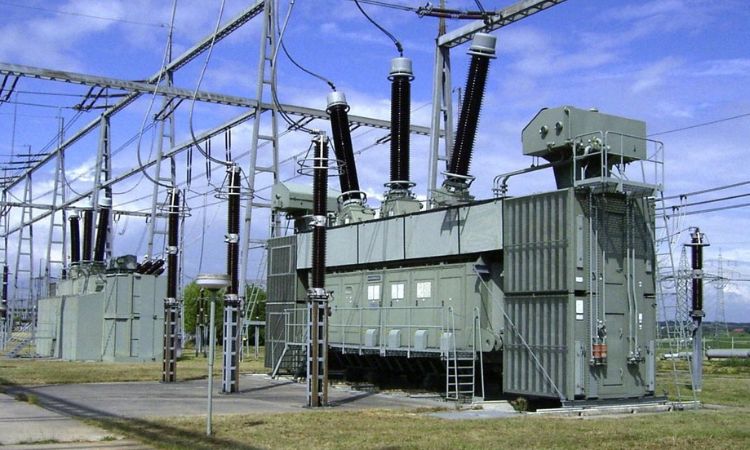The global electrical bushing market size reached nearly USD 3.2 billion in 2023. The market is projected to grow at a CAGR of 4.3% between 2024 and 2032, reaching a value of around USD 4.71 billion by 2032. As the backbone of electrical infrastructure, electrical bushings play a crucial role in insulating and guiding conductors through earthed barriers. With the growing demand for reliable power infrastructure and the expansion of electrical grids worldwide, the market for electrical bushings is poised for significant growth in the coming years.
Market Segmentation
The electrical bushing market is segmented by type, voltage, insulation, and application. Each segment offers unique insights into the market dynamics and growth potential.
By Type
-
Oil Impregnated Paper (OIP):
OIP bushings are widely used due to their excellent insulation properties and durability. These bushings are commonly found in high-voltage applications where reliability is paramount. The market demand for OIP bushings remains strong, particularly in regions with established power grids. However, the market is gradually shifting towards alternatives due to the environmental concerns associated with oil-based insulation. -
Resin Impregnated Paper (RIP):
RIP bushings offer a more environmentally friendly alternative to OIP bushings. They provide superior insulation and are less prone to oil leakage, making them an increasingly popular choice in modern power systems. Industry trends indicate a growing preference for RIP bushings, especially in new installations where sustainability is a priority. -
Others:
This category includes various other types of bushings, such as gas-insulated bushings, which are used in specialized applications. While these types may represent a smaller portion of the market, they serve critical roles in specific industrial settings.
By Voltage
-
Medium Voltage (1 KV to 72.5 KV):
Medium voltage bushings are essential in power distribution networks. They are commonly used in transformers, switchgear, and other equipment that operates within this voltage range. The market for medium voltage bushings is expected to grow steadily, driven by the expansion of distribution networks and the ongoing modernization of existing infrastructure. -
High Voltage (72.5 KV to 220 KV):
High voltage bushings are crucial in power transmission, where they are used to connect transformers and other equipment to the grid. The demand for high voltage bushings is anticipated to rise, particularly in regions investing in upgrading their transmission networks to accommodate higher power loads. -
Extra High Voltage (> 220 KV):
Extra high voltage bushings are used in the most demanding applications, such as in substations and large power plants. These bushings must withstand extreme electrical stresses and provide the highest level of reliability. The market for extra high voltage bushings is expected to grow at a healthy rate, fueled by the construction of new power generation facilities and the expansion of long-distance transmission lines.
By Insulation
-
Porcelain:
Porcelain bushings have been a staple in the industry for many years due to their robustness and reliability. They are commonly used in outdoor applications where they are exposed to harsh environmental conditions. Despite the emergence of new materials, porcelain bushings continue to hold a significant share of the market, particularly in regions with established infrastructure. -
Others:
This category includes bushings made from newer insulation materials such as polymer composites. These materials offer advantages like lighter weight, increased flexibility, and better resistance to pollution and moisture. The market for these alternative materials is expected to grow as the industry seeks more efficient and durable solutions.
By Application
Electrical bushings find application in various sectors, including power distribution, transformers, and switchgear. They are critical components in the reliable operation of electrical networks. Emerging applications, particularly in renewable energy projects, are driving the diversification of the market, with bushings being adapted for use in wind turbines, solar farms, and other green energy solutions.
Regional Analysis
North America:
The North American electrical bushing market is characterized by steady growth, driven by the ongoing modernization of the power grid and investments in renewable energy projects. The region’s focus on upgrading aging infrastructure is expected to fuel demand for both replacement and new bushing installations.
Europe:
Europe is a mature market with a strong focus on sustainability and environmental protection. The region’s stringent regulations and commitment to reducing carbon emissions are encouraging the adoption of greener technologies, such as RIP bushings. Additionally, the expansion of cross-border transmission networks within the European Union is expected to drive market growth.
Asia-Pacific:
The Asia-Pacific region is witnessing rapid industrialization and urbanization, leading to increased demand for electricity and the expansion of electrical grids. Countries like China and India are investing heavily in new power generation and transmission projects, making the region a key market for electrical bushings.
Latin America:
In Latin America, the growth of the electrical bushing market is driven by infrastructure development and the need to improve power reliability in both urban and rural areas. The region’s focus on expanding its renewable energy capacity is also contributing to market growth.
Middle East & Africa:
The Middle East and Africa are experiencing significant growth in their electrical bushing markets due to infrastructure development and the expansion of power generation capacity. The region’s growing population and industrial base are driving the need for reliable and efficient power systems, boosting demand for bushings.
Competitive Landscape
The global electrical bushing market is highly competitive, with several key players dominating the landscape. Companies are focusing on innovation and sustainability, developing new products that meet the changing needs of the market. Strategic partnerships, mergers, and acquisitions are common as companies seek to expand their market presence and enhance their product portfolios.
Market Drivers and Challenges
Drivers:
- Technological Advancements: Ongoing research and development efforts are leading to the creation of more efficient and durable bushings.
- Increasing Demand for Reliable Power Infrastructure: As the global population grows, so does the need for stable and reliable electricity, driving demand for high-quality electrical bushings.
- Global Urbanization and Industrial Growth: The expansion of urban areas and industrial facilities worldwide is boosting the demand for electrical bushings.
Challenges:
- High Initial Investment and Maintenance Costs: The cost of manufacturing and maintaining electrical bushings can be significant, posing a challenge for market growth.
- Market Competition and Pricing Pressures: The presence of numerous competitors in the market can lead to pricing pressures, impacting profit margins.
Future Outlook and Forecast (2024-2032)
The future of the global electrical bushing market looks promising, with steady growth expected across all regions. Technological advancements and the shift towards more sustainable solutions will likely drive innovation and market expansion. As the demand for electricity continues to rise, particularly in emerging markets, the need for reliable electrical bushings will remain strong.




